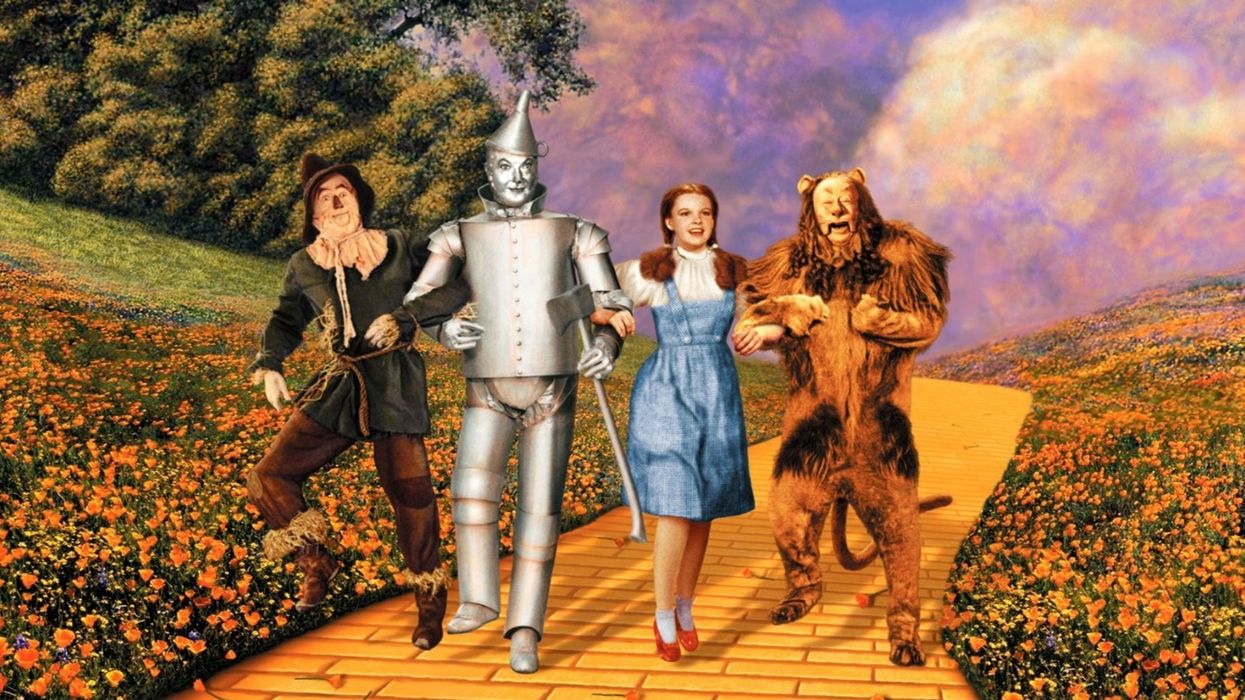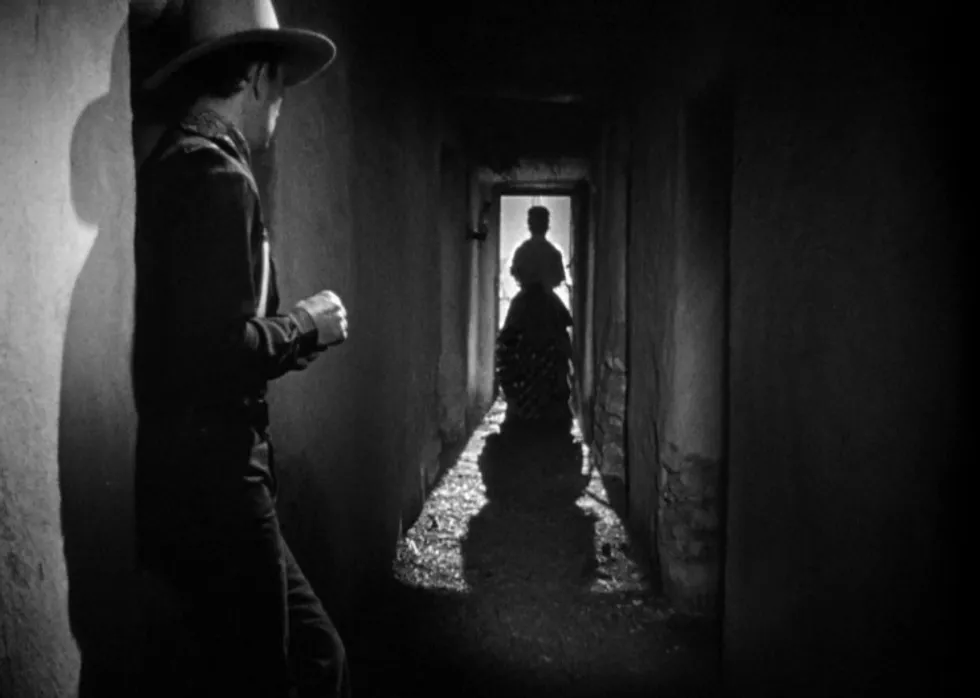
American cinema is not just the place of Hollywood stars and starlets, it's also full of history and influence. In fact, as movies grew in popularity, Hollywood's Golden Age helped solidify the movie business as one of the most important and influential superpowers over the last hundred years.
But when was the Golden Age? And how did it become so influential in terms of popular culture around the world? Who were the stars and what are some Golden Age movies?
Today, we're going to talk about those golden years in Hollywood. The time when the glitz and glamor of the biz actually came into its own and grew into what it is in the current era. We'll look at quotes from film historians, discuss some movies, and even get into antitrust laws in the studio system.
Let's dive in.

When Was the Golden Age of Hollywood?
Historians are actually pretty divided on the exact timeframe of Hollywood's so-called Golden Age. Many mark the advent of "talkies" with The Jazz Singer in 1927 as the start. And the end is marked by the beginning of World War II in 1939, though some extend that period through the end of the war to 1945.
During this time, Hollywood was rife with popular stars, famous movie titles, and a huge jump in cinematography and even in sound quality. Around 80 million people a week went to the movies in America. In those years, almost 8,000 movies were released. Titles such as The Wizard of Oz, It’s a Wonderful Life, Casablanca, King Kong, and Gone with the Wind marked the success of the studio system.
The advent of cinema led to movies like Birth of a Nation, which changed how audiences interacted with cinema. These cultural shifts went even further during this time, introducing people to a wider array of stars, roles, and even kinds of people in front of the camera.

The Studio System in the Golden Years of Hollywood
Classical Hollywood cinema is a term used in film theory to describe both a narrative and visual style of filmmaking characteristic of American cinema between the 1910s and the 1960s. This style spread all over the world.
During this time, eight studios ruled the roost in Hollywood. They were called "The Big Five and the Little Three."
Golden Age Movie Studios of Hollywood:
- Universal Pictures
- Warner Bros.
- Paramount Pictures
- Columbia Pictures
- Metro-Goldwyn-Mayer (MGM)
- United Artists (UA)
- 20th Century Fox/20th Century Studios
- RKO Radio Pictures/RKO Pictures
To make movies suitable for the public, the big five studios and the little three studios had to follow the Hays Code.

What was the Hays Code?
The Hays Code was the name for the Motion Picture Production Code. It was adopted in 1930 but not enforced until 1934. The Code was a set of rules governing American filmmaking. It governed the morals within movies until the 1960s.
The code was adopted because of the scandals surrounding famous movie stars which led to a media frenzy.
Studio heads were afraid the government would censor or disband them, so they adopted the Hays Code to voluntarily censor films themselves.
What Were the Rules of the Hays Code?
According to the book Hollywood V. Hard Core: How the Struggle Over Censorship Created the Modern Film Industry by Jon Lewis, the Hays Code was responsible for the following bans inside movies and television:
- Pointed profanity—by either title or lip—this includes the words "God," "Lord," "Jesus," "Christ" (unless they be used reverently in connection with proper religious ceremonies), "hell," "damn," "Gawd," and every other profane and vulgar expression however it may be spelled.
- Any licentious or suggestive nudity—in fact or in silhouette; and any lecherous or licentious notice thereof by other characters in the picture.
- The illegal traffic in drugs.
- Any inference of sex perversion.
- White slavery.
- Miscegenation (sex relationships between the white and Black races).
- Sex hygiene and venereal diseases.
- Scenes of actual childbirth—in fact or in silhouette.
- Children's sex organs.
- Ridicule of the clergy.
- Willful offense to any nation, race, or creed.
And be it further resolved, that special care be exercised in the manner in which the following subjects are treated, to the end that vulgarity and suggestiveness may be eliminated and that good taste may be emphasized:
- The use of the flag
- International relations (avoiding picturizing in an unfavorable light another country's religion, history, institutions, prominent people, and citizenry)
- Arson
- The use of firearms
- Theft, robbery, safe-cracking, and dynamiting of trains, mines, buildings, etc. (having in mind the effect which a too-detailed description of these may have upon the moron)
- Brutality and possible gruesomeness
- Technique of committing murder by whatever method
- Methods of smuggling
- Third-degree methods
- Actual hangings or electrocutions as legal punishment for crime
- Sympathy for criminals
- Attitude toward public characters and institutions
- Sedition
- Apparent cruelty to children and animals
- Branding of people or animals
- The sale of women, or of a woman selling her virtue
- Rape or attempted rape
- First-night scenes
- Man and woman in bed together
- Deliberate seduction of girls
- The institution of marriage
- Surgical operations
- The use of drugs
- Titles or scenes having to do with law enforcement or law-enforcing officers
- Excessive or lustful kissing, particularly when one character or the other is a "heavy."
The Hays Code was abandoned in 1965 in favor of the G, PG, PG-13, R, NC-17, and X system which is still around today. It took years to suss out these ratings, but they are still used and based on the viewers' age.

Which Movie Stars Worked During Hollywood's Golden Era?
Hollywood stars such as Humprey Bogart, Ingrid Bergman, Clark Gable, Jimmy Stewart, Cary Grant, Henry Fonda, Katherine Hepburn, Clark Gable, Gary Cooper, Bette Davis, Errol Flynn, and even Jean Harlow dominated screens. These actors and actresses enjoyed fame all over the globe.
This age in Hollywood produced vehicles for these people to star in like, Mr. Smith Goes to Washington, Scarface, A Star is Born, Stagecoach, and Modern Times. They were movies of various genres. They offered a wide range of roles for the stars. People could experiment and capitalize within this film industry.
Studios kept popular stars working, sometimes to their detriment, with exclusive contracts that demanded they churn movies out.

What Killed Hollywood's Golden Age?
As we mentioned earlier, the second World War slowed Hollywood down and ended the Golden Age of cinema. People went to war, movie production slowed down, and people generally focused on world events. But there was also something else going on.
Television had come about in the 1930s and was already creeping into Hollywood's hold on the United States. TVs were increasingly expensive in the 30s, but as the war ended, the production of them increased, dropping the price. Soon, Americans were buying TV sets, and the cultural hold movies had was loosened, as people began to flock to their living rooms instead of movie theaters. In 1948, four major TV networks began broadcasting a full prime-time schedule seven nights a week.
Also, there was a cultural diaspora away from cities to the suburbs. The suburban areas often didn't have movie theaters, so that affected numbers as well.
Plus, studios changed with the Paramount Antitrust ruling.

The Antitrust Ruling Officially Ended the Golden Era of Hollywood
In 1948, the Supreme Court of the United States found Paramount guilty of price-fixing in an antitrust lawsuit. It was a huge ruling that affected every other studio and split up their businesses, so they no longer combined production, distribution, and exhibition. This breakup of vertical integration changed the landscape of cinema forever.
New federal laws allowed the government to deny TV licenses to companies that had been convicted of engaging in monopolistic activities—like movie studios. This separated movie studios from the TV business that was taking over.

The Aftermath of the Golden Era
As Hollywood entered the 1950s, America found itself in a Cold War. McCarthyism was on the rise, and Hollywood became torn apart as artists were blacklisted and major stars' lives were destroyed. People were forced to testify in HUAC hearings, and the glitz and glamor of the biz dulled. We saw Hollywood lose its grip on culture, now being investigated by the government for corruption and no longer a shining beacon of light people wanted to follow.

Summing Up the Golden Age of Hollywood
The Golden Age of Hollywood was one of the most interesting and tumultuous times in American movie history. Studios had a ton of power and influence over people, and the masses flocked to thousands of movies. While this era only lasted a short time, we still are feeling the ripple effects of movie stars, powerful studios, and the impact of movies on culture today.
Hollywood has been through many different eras, and while the Golden Era produced many classic films, it also served as the foundation for the Tinseltown we know today.
What are some of your favorite projects and stars from that era?
Let us know in the comments.












